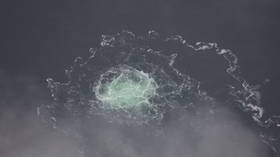Pet waste has greater environmental impact than air pollution – study

Dog waste being left behind in nature reserves is resulting in overfertilization that is damaging ecosystems by reducing biodiversity, a study has claimed. It also allows a few plants to eliminate others and the wildlife that relies on their existence.
The researchers published their findings in the peer-reviewed Ecological Solutions and Evidence journal on Sunday. They studied nitrogen and phosphorous levels left behind by more than 1,600 dogs at 500 nature reserves.
Looking at four reserves on the outskirts of Ghent in Belgium, researchers estimated that dog waste leaves behind an annual average of 11kg of nitrogen and 5kg of phosphorus per hectare. That means that dog feces and urine cause a greater impact on the environment than pollution in the air from farming, industry, and car exhaust fumes.
“Atmospheric nitrogen inputs from agriculture, industry and traffic rightfully receive a lot of policy attention, but dogs are entirely neglected in this respect,” lead researcher Professor Pieter De Frenne said.
Potentially presenting a solution to the environmental impact, De Frenne suggested that “managers of nature reserves with sensitive ecosystems could consider banning dogs, which already happens in some places to protect birds and other wildlife.”
Even if pets were prevented from entering nature reserves to protect wildlife, research has previously found that the destructively high levels of chemicals could remain present in the ground for up to three years.
The De Frenne study adds scientific support to a previous warning from British charity Plantlife, which described the impact of nitrogen pollution as “one of the greatest threats to our wild plants, lichens and fungi,” raising concerns about how “little is being done to tackle it.”












